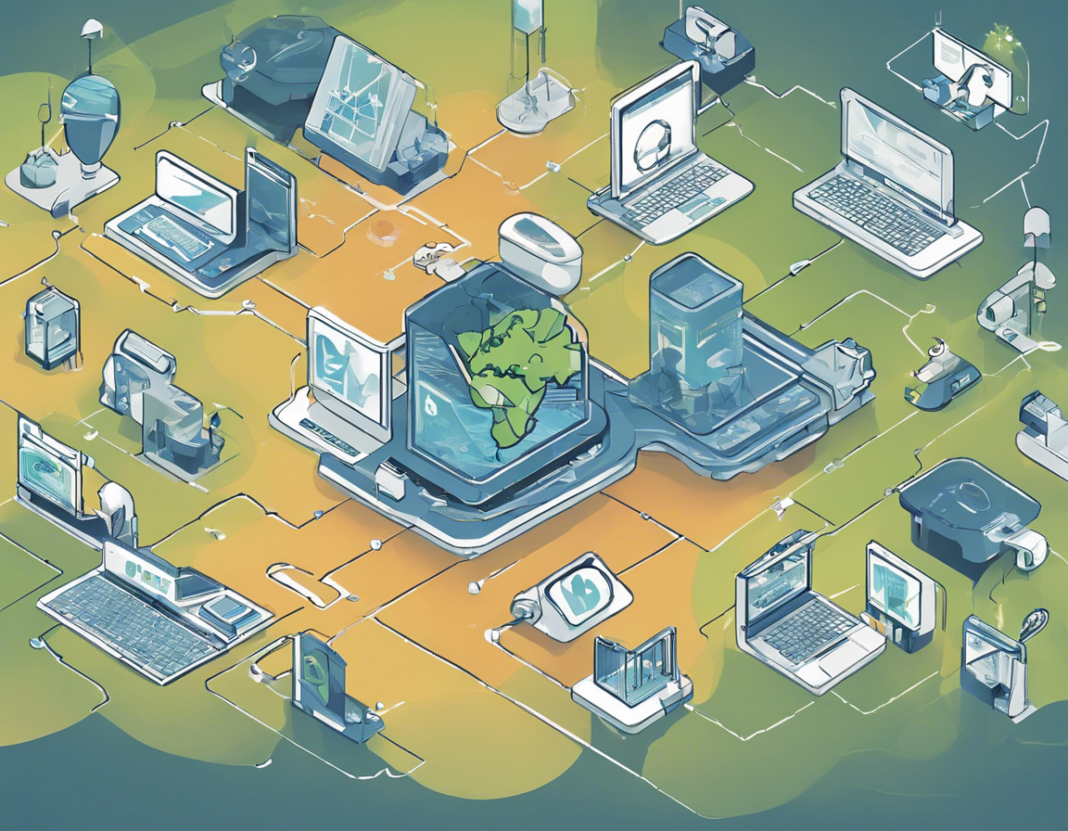Technology has revolutionized the way we live, work, and communicate, offering countless benefits and conveniences. However, there is a dark side to this rapid advancement that often goes unnoticed – the negative impact on sustainability. While new technologies promise efficiency, productivity, and connectivity, they also pose significant threats to the environment and our long-term well-being. In this article, we will explore the various ways in which new technology can have a detrimental effect on sustainability and what we can do to mitigate these issues.
The Rise of E-Waste
One of the most pressing environmental challenges associated with new technology is the mounting e-waste crisis. As consumers upgrade their devices at increasingly rapid rates, old electronics are being discarded at alarming levels. E-waste, which includes smartphones, laptops, tablets, and other electronic devices, contains hazardous materials such as lead, mercury, and cadmium that can contaminate soil and water sources if not properly disposed of. The improper handling and disposal of e-waste contribute to pollution, health risks, and the depletion of valuable resources.
Energy Consumption and Carbon Footprint
While new technology is often touted for its energy efficiency, the sheer volume of devices in operation worldwide has led to a significant increase in energy consumption. Data centers that power the internet, for example, require vast amounts of electricity to operate and cool servers. Additionally, the manufacturing, transportation, and disposal of electronic devices contribute to carbon emissions and drive up carbon footprints. As the demand for technology continues to grow, so does its environmental impact.
Resource Depletion and Mining
The production of electronic devices relies on extracting and processing raw materials such as metals, minerals, and rare earth elements. The mining of these resources not only leads to habitat destruction and water pollution, but it also contributes to deforestation and soil degradation. Furthermore, the finite nature of many of these resources raises concerns about their sustainability and the long-term viability of our technological economy.
Planned Obsolescence and Disposable Culture
In a consumer-driven market, planned obsolescence has become a common practice among technology manufacturers. Products are intentionally designed to have a limited lifespan or become outdated quickly to stimulate continuous consumption. This culture of disposability encourages wastefulness and overconsumption, further exacerbating the environmental impact of new technology.
Electronic Pollution and Health Risks
The proliferation of electronic devices has led to a corresponding increase in electronic pollution. Electromagnetic radiation from cell phones, Wi-Fi routers, and other devices has been linked to various health risks, including cancer, neurological disorders, and reproductive issues. The disposal of e-waste in landfills or incinerators also releases toxic chemicals into the air and soil, posing additional threats to human health and the environment.
Mitigating the Negative Impact of New Technology
While the negative impact of new technology on sustainability is a significant concern, there are steps that individuals, businesses, and policymakers can take to mitigate these effects and promote a more sustainable approach to technology use:
1. Extended Producer Responsibility: Encouraging technology manufacturers to take responsibility for the entire lifecycle of their products, including collection, recycling, and proper disposal of e-waste.
2. Circular Economy Practices: Embracing circular economy principles to reduce waste, promote product longevity, and maximize resource efficiency through recycling and repair initiatives.
3. Energy Efficiency Standards: Implementing stricter energy efficiency standards for electronic devices and data centers to reduce carbon emissions and energy consumption.
4. Sustainable Design: Prioritizing sustainable design practices that extend product lifecycles, minimize environmental impact, and use renewable resources where possible.
5. Consumer Education: Raising awareness among consumers about the environmental impact of new technology and promoting sustainable purchasing decisions, such as buying refurbished products or supporting eco-friendly brands.
Frequently Asked Questions (FAQs)
1. What is sustainability in the context of technology?
Sustainability refers to the ability to meet the needs of the present without compromising the ability of future generations to meet their own needs. In the context of technology, sustainability involves minimizing the environmental impact of electronic devices, conserving resources, and promoting responsible consumption and disposal practices.
2. How does e-waste contribute to environmental pollution?
E-waste contains hazardous materials that can leach into soil and water sources if not properly disposed of. The improper handling and disposal of e-waste contribute to pollution, health risks, and the depletion of valuable resources, making it a significant environmental concern.
3. What is planned obsolescence?
Planned obsolescence is a strategy employed by manufacturers to design products with a limited lifespan or intentionally outdated features to encourage consumers to upgrade to newer models. This practice leads to wastefulness and overconsumption and contributes to the growing issue of e-waste.
4. How can individuals reduce their impact on sustainability when using technology?
Individuals can reduce their impact on sustainability by adopting energy-saving practices, recycling electronic devices, choosing refurbished products, and supporting brands that prioritize environmental stewardship. Additionally, educating oneself on the environmental impact of technology and advocating for sustainable practices can make a difference.
5. What role do policymakers play in promoting sustainability in technology?
Policymakers play a crucial role in regulating the manufacturing, disposal, and energy consumption of electronic devices. By implementing environmental policies, such as extended producer responsibility laws and energy efficiency standards, policymakers can incentivize sustainable practices and hold manufacturers accountable for their environmental impact.

